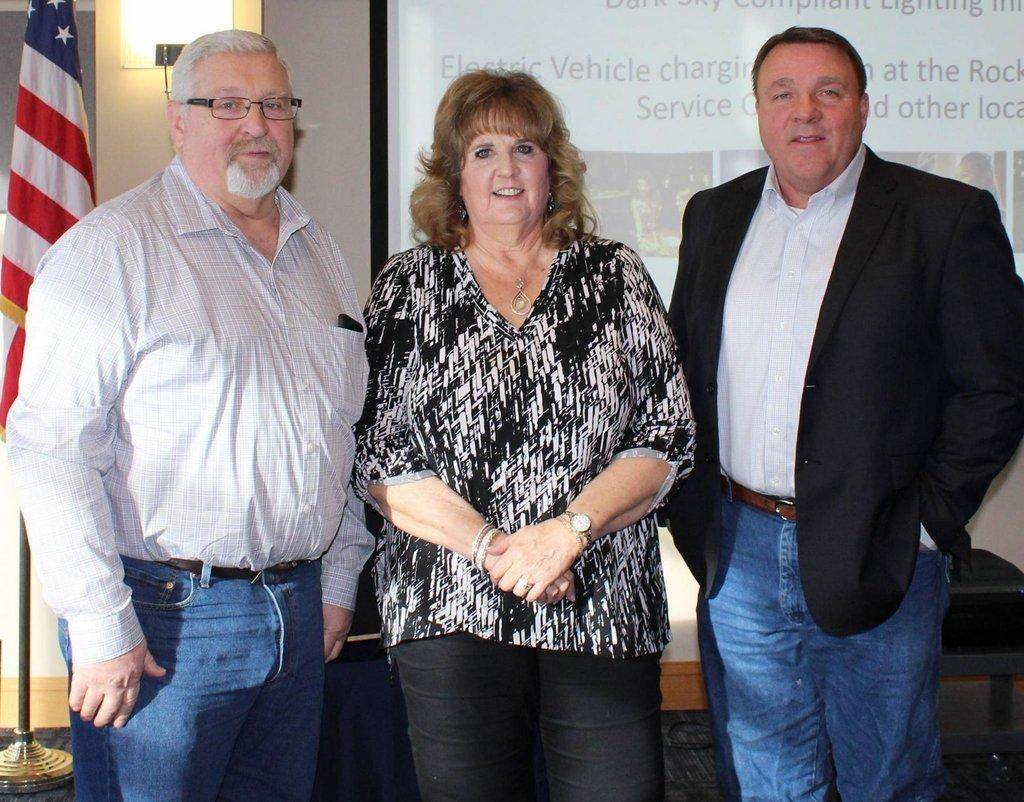BEAR Press Release
Representatives from Rocky Mountain Power presented at the Castle Country Business and Expansion and Retention meeting on Jan. 30. Deb Dull, regional business manager, along with Darrell Cunningham, director of the Huntington Plant, and Laren Huntsman, director of Hunter Plant, delivered the presentation. All three representatives are local and have a vested interest in their communities.
The narrative of the presentation focused on PacifiCorp’s newest Integrated Resource Plan or (IRP) and other initiatives and challenges for the company.
PacifiCorp’s IRP, a comprehensive decision support tool and road map for meeting the company’s objective of providing reliable and least-cost electric service to their customers, was one of the main discussion items. The plan was developed with considerable public involvement from state utility commission staff, state agencies, customer and industry advocacy groups, project developers, and other stakeholders.
The 2019 Pacificorp IRP is for all the company’s customers. The plan calls for adding approximately 7,000 megawatts of new renewable resources by 2025 and nearly 11,000 megawatts by 2038. The renewable energy sources include wind, solar, hydroelectric and other technologies. These renewable energy investments coincide with the retirement of 16 of the 24 coal generation units the company operates by 2030 (2,800 megawatts). Then will come the retirement of 22 of 24 coal generation units by 2038 (totaling 4,500 Megawatts). Carbon emission reductions of 50 percent will be achieved by 2030 and an 80 percent reduction will take place by 2040.
The key elements of the IRP include focusing on the first 10 years of the 20-year planning period, developing a preferred portfolio of supply-side and demand-side resources to meet customers needs, and an action plan that identifies the steps the company will take during the next two to four years to implement the plan.
Dull explained that PacifiCorp prepares its integrated resource plan on a biennial schedule, filing its plan with state utility commissions during each odd numbered year. The IRP uses system modeling tools as part of its analytical framework to determine the long-run economic and operational performance of alternative resource portfolios.
The economics of maintaining a low-cost reliable power source is a challenge. There are other competitors with other sources of energy. “We strive to be the supplier of choice,” stated Huntsman.
He said the company is always looking out the ratepayers. They want reliable sustainable energy and he said that drives operations to be the most efficient. “From a manager, local citizen, native standpoint, we want to keep the plants running,” he stated. “That’s paramount for us.”
The company employs 200 to 210 people locally at the Hunter Plant. At the Huntington Plant, there are 154 full-time employees and over 20 different contractors. Examples of contractors are companies that provide scaffolding for use or provide trucking to haul ash from the plant. The jobs that are generated go far beyond the 350+ employees at the plants.
“Our ability to adapt and be versatile is what will make us vital in the future,” stated Cunningham. “The workforce has really stepped up to the plate to take on the challenge of transmitting power in the form of solar and other renewables in plants that were initially designed to run coal 24 hours a day, seven days a week.”
They also covered many topics related to the IRP, including legislation of House Bill 411 (Community Renewable Energy Act), the Gateway Transmission Project and the Dark Sky Initiative. More information on this can be found at online at www.rockymountainpower.net.
House Bill 411 has some of Castle Country’s neighboring counties and communities signing up to be receiving 100 percent renewable energy by 2030.
PacifiCorp has put a lot of time and investment in working with programs to reduce emissions. For example, Rocky Mountain is installing longer turbines on the wind mill farm in Casper, Wyoming. This step will increase productivity and generate more power without the company increasing its carbon footprint.
The record of decision was established on the Gateway Transmission line route (a transmission project from Glen Rock, Wyoming to Melba, Idaho). Completion of the project will be in 2023. The additional lines will enable the company to transmit more power and provide further diverse options for renewables.
All three representatives encouraged everyone to be informed and extended invitations to a public meeting discussing the topics on Feb. 12 at USU Eastern in Price.
For more information on the 2019 IRP, please click here.

